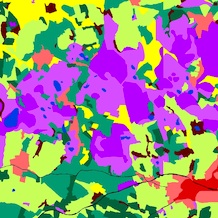Landscape Characterisation

Conservation/Heritage Management
Other researchers:
Prior to joining the University of York I worked for eight years in the English Heritage Characterisation Team, contributing to its research outputs and promoting characterisation in the heritage and local government sectors. There is a misunderstanding about characterisation, that it somehow replaces the need for more detailed field investigation, or that it threatens more traditional approaches to heritage protection. Neither is true. As the English Heritage webpages state: 'Characterisation helps to manage change in the historic environment by tracing the imprint of history. Piecing together information from maps new and historic, from aerial photos, and from the wealth of data that we already have about archaeology and buildings, it builds up area-based pictures of how places in town and country have developed over time. It shows how the past exists within today's world.These insights into the historic environment, however, are about the future, not the past. Characterisation is not an academic exercise but a vital tool for developers and planners to make sure that a place's historical identity contributes properly to everyone's Quality of Life.' (From http://www.english-heritage.org.uk/characterisation, where more information about Characterisation projects can be found.)
In my new position at the University of York I intend to maintain an active interest in characterisation, and - in partnership with my former colleagues and others - to undertake research in this area. The Strait Street and Homelessness projects are loosely connected to the principles and methods of characterisation.
